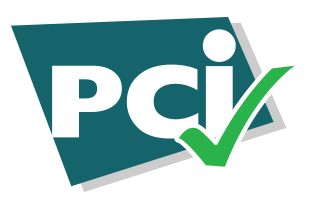Treasury Banking key compliance are the Six pillars of leading practices for treasury Bank Investments
- Development
- Security
- Risk Management
- Cash Management
- Liquidity
- Procurement
Major Concerns
- Keeping cash management with internal expense cash flow for tax purposes
- It keep low income exposure due to risk internal risk base compliance
- operates at NOL net operating loss. (When there a loss there is no income) Will change status if acquire confusion of annual cash
- Operate as a private entity and it chief treasurer I professional fiduciary and I don expose any fiduciary exchange that involve and trustee beneficiary relationship with consent of the client.
- Hold private equity and bond investment banking due to SEC market restrictions and private placement disclosure rules, and has no relevance to the bank holding outside it clients.
- Insure that bank transaction are private and not state government.
- Ensure that clients will have record of offers and I have a recorded acceptance. In reference with CFR 31 §1010.410 The transmittal of funds in the amount of $3,000 or more:
Recordkeeping requirements. For each transmittal order that it accepts as a transmittor’s financial institution, a financial institution shall obtain and retain either the original or a microfilm, other copy, or electronic record of the following information relating to the transmittal order:
- The name and address of the transmittor
- The amount of the transmittal order;
- The execution date of the transmittal order;
- Any payment instructions received from the transmittor with the transmittal order;
- The identity of the recipient’s financial institution;
- As many of the following items as are received with the transmittal order:
For Risk Based Approach with Reasonable Care to the Account holder
Mandatory Data:
- company name
- company business activity
- company ownership structure
- alternative business combination
- volume and types of transactions.
- planning for source of funds
- All beneficial owners of the accounts?
- financial position and banking references (New Start Up)
- No KCY Justification I am an account holder with two year in good standing
- company domicile with the US
- No EDD Enhance Due Diligence, only CDD Customer Due Diligence for Private clients.
- US routine and primary trade area of transactions
- US base Company with no high-risk jurisdictions
- Commercial bank account qualification for money market depository a funds
- AML Policy and credit risk compliances
- MSB Registered and State exempted by act of law.
- Guaranteed ongoing risk-based CDD procedures
- EFT Rules
- type of funds will be deposited and EFT
- All clients have no financial fraudulent tax evasion record
- Have not neglected any financial compliance
- Client shall be within good stand with the state
Onboarding, documentation, and other prerequisites
Customers interested in acquiring any swap, derivative, or foreign exchange product, service, or transaction with Treasury Bank should take into account that there are several steps to complete before an offer can be made or accepted, including:
- Internal On Us credit approval; (Not a Leveraging other bank’s credit or cash
- background checks
- due diligence; (Have an Account within good standing)
- customer suitability
- onboarding documentation
- swap trading relationship documentation (SEC Reg D Exemption)
- clearing exemption documentation
- account documentation
- including online system access; (ERP and Quick Books)
- tax forms
- margining collateral or (ABS)
- other credit support arrangements. (Origination and Netting Agreement)
Risks to consider
Account holders should consider at their own risk
While Treasury Bank can use swaps, derivatives, Equities, Bonds and foreign exchange transactions as an effective hedging tool to reduce market, credit, or other risks associated with an asset or liability, this presumes holding these instruments to maturity and not disposing of the asset or liability during the term of the hedge. Whether Treasury Bank Treasurers use them for hedging or another purpose, customers should satisfy themselves that they sufficiently understand the risks, including (without limitation) the risk of loss in the event of early termination or modification of the transaction, the risk associated with an early repayment or other disposition of the underlying asset or liability prior to the transaction’s maturity, the risk of acquiring a transaction in anticipation of hedging an asset or liability that does not materialize, and the risk that in hindsight it could prove to have been better not to have hedged. Losses and costs could be substantial.
Before entering into any investment transaction, customers should carefully read and fully understand all relevant information and disclosures furnished or made available to them by their attorney, advisor, broker or other counterparty. Treasury Bank’s clearinghouse or otherwise. These include, without limitation, the general and relevant product-specific disclosure documents concerning transactions prepared by Treasury Bank Treasurers, which are available at http://treasurybank.org/portal
Transactions described on this website are not bank deposits or FDIC insured, will expose customers to the credit risk of Treasury Bank, and therefore involve risk of loss to you apart from the market risk associated with the underlying rate, price, or other economic measure on which the transaction is based. Financial information concerning go to Treasury Bank Knowledgebasd is available at: https://www.treasurybank.org/knowledgebase
Independent obligations Account holders have their own obligation to loss
To the extent any swap, derivative, or foreign exchange transaction is acquired to hedge against interest rate risk, foreign currency risk, commodity price risk, credit risk, or other risks associated with an asset or liability, including a loan or other financing, such transaction would be a separate and independent obligation and would not be contingent on whether or not any such asset or liability is acquired or incurred, or such loan or other financing closes, is outstanding or is repaid, in whole or in part, at any time, subject to any contractual requirement to terminate and settle the transaction early upon any disposition of such asset or liability, including upon the prepayment of such loan or financing, or for other loan-related or financing-related events.




